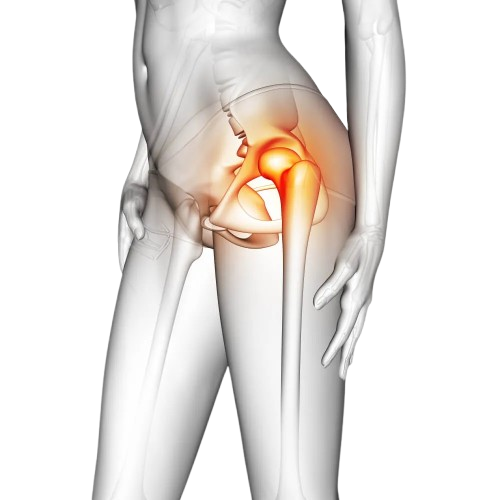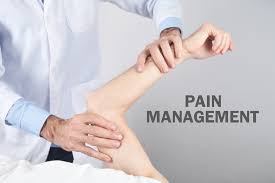Expert Avascular Necrosis Treatment in Vadodara
Find relief from bone death and joint pain with professional chiropractic care. Preserve joint function and improve mobility without surgery.

Understanding Avascular Necrosis
A serious condition that requires early intervention and comprehensive care
What is Avascular Necrosis?
Avascular Necrosis (AVN), also known as osteonecrosis, is the death of bone tissue due to a lack of blood supply. This condition can lead to tiny breaks in the bone and eventual bone collapse. Common causes and risk factors include:
- Trauma or injury that damages blood vessels supplying the bone
- Long-term steroid use which can affect blood flow to bones
- Excessive alcohol consumption leading to fatty deposits in blood vessels
- Medical conditions like sickle cell anemia, lupus, and Gaucher's disease
- Radiation therapy that can weaken bone and impair blood supply
- Decompression sickness from rapid decompression in divers
Chiropractic care focuses on improving circulation, reducing inflammation, and preserving joint function through non-invasive techniques and rehabilitation.

Recognizing Avascular Necrosis Symptoms
Early detection is crucial for preventing joint collapse and preserving function
Joint Pain
Gradual onset of pain that may become severe, often described as deep, aching, or throbbing in the affected joint.
Limited Range of Motion
Progressive stiffness and decreased ability to move the affected joint, especially in hips, shoulders, or knees.
Limping & Mobility Issues
Difficulty walking, climbing stairs, or bearing weight on the affected limb, particularly with hip involvement.
Progressive Symptoms
Symptoms that worsen over time, with pain initially only during activity progressing to pain at rest.
Stages of Avascular Necrosis
Understanding disease progression helps guide appropriate treatment
Early Stage
No symptoms or mild pain. X-rays appear normal, but MRI shows early bone changes. Blood supply is compromised but bone structure remains intact.
- Best prognosis for recovery
- Non-surgical treatment most effective
- Focus on preserving bone viability
Moderate Stage
Visible bone changes on X-ray. Bone begins to weaken but maintains its shape. Pain becomes more noticeable with activity.
- Conservative treatment still possible
- Joint preservation is primary goal
- Weight-bearing restrictions needed
Advanced Stage
Bone collapse occurs, joint surface becomes irregular. Severe pain and limited mobility. Often requires surgical intervention.
- Focus on pain management
- Mobility preservation
- Quality of life improvement
Our Avascular Necrosis Treatment Approach
Comprehensive chiropractic care for pain relief and joint preservation
Comprehensive Assessment

Joint Function Evaluation
Detailed assessment of range of motion, weight-bearing capacity, and functional limitations to determine treatment approach.

Biomechanical Analysis
Evaluation of walking patterns, posture, and movement mechanics to identify compensatory patterns and reduce stress on affected joints.

Imaging Correlation
Review of X-rays, MRI, or CT scans to understand the extent of bone involvement and guide appropriate treatment intensity.
Our Treatment Methods

Circulation Enhancement
Techniques to improve blood flow to affected areas, including specific adjustments, soft tissue work, and therapeutic modalities.

Pain Management
Gentle, non-weight bearing techniques to reduce inflammation, manage pain, and improve comfort without stressing affected bones.

Gentle Joint Mobilization
Careful, controlled movements to maintain joint mobility and prevent stiffness while protecting the affected bone areas.

Therapeutic Exercise
Customized exercise program focusing on maintaining muscle strength, improving circulation, and supporting joint health without excessive loading.

Nutritional Guidance
Dietary recommendations to support bone health, reduce inflammation, and promote healing through proper nutrient intake.

Mobility Support
Guidance on proper use of assistive devices, activity modification, and lifestyle adjustments to protect affected joints during daily activities.
Treatment & Recovery Expectations
Realistic timeline for avascular necrosis management and improvement
Initial Phase (Weeks 1-4)
Focus: Pain reduction and joint protection
- Significant pain reduction and improved comfort
- Education on activity modification and joint protection
- Initial improvement in circulation and mobility
- Establishment of safe movement patterns
Rehabilitation Phase (Months 1-3)
Focus: Functional improvement and strength building
- Progressive improvement in range of motion
- Building supporting muscle strength
- Enhanced circulation to affected areas
- Improved ability to perform daily activities
Maintenance Phase (Months 3+)
Focus: Long-term joint preservation and prevention
- Ongoing joint health maintenance
- Prevention of further deterioration
- Optimized functional capacity
- Long-term management strategies
Patient Success Story
Real results from our avascular necrosis treatment
"I was diagnosed with early-stage avascular necrosis in my hip after years of steroid treatment for asthma. The constant pain and fear of needing hip replacement surgery was overwhelming. Dr. Chandresh developed a comprehensive conservative treatment plan that included gentle adjustments to improve circulation, specific exercises to strengthen supporting muscles, and nutritional guidance to support bone health. Within two months, my pain had significantly decreased, and after six months, follow-up imaging showed remarkable improvement in bone viability. I'm now able to walk comfortably and maintain an active lifestyle without surgery. The holistic approach made all the difference."
- 38-year-old patient from Vadodara (Early Stage AVN Success)
Managing Avascular Necrosis
Lifestyle strategies to support treatment and preserve joint health
Weight Management
Maintain healthy body weight to reduce stress on weight-bearing joints, particularly important for hip and knee AVN.
Alcohol Moderation
Limit alcohol consumption, as excessive drinking is a significant risk factor for developing and worsening AVN.
Medication Awareness
Work with healthcare providers to minimize steroid use when possible and explore alternative treatments for underlying conditions.
Low-Impact Exercise
Engage in swimming, cycling, or water aerobics to maintain fitness without excessive stress on affected joints.
Bone-Healthy Nutrition
Ensure adequate intake of calcium, vitamin D, magnesium, and other nutrients essential for bone health and repair.
Regular Monitoring
Consistent follow-up care and imaging when appropriate to monitor progression and adjust treatment as needed.
Ready to Address Your Avascular Necrosis?
Book your consultation today and explore conservative treatment options for joint preservation
Conservative Joint Preservation
No surgery, no invasive procedures - just proven chiropractic techniques to improve circulation, reduce pain, and preserve joint function